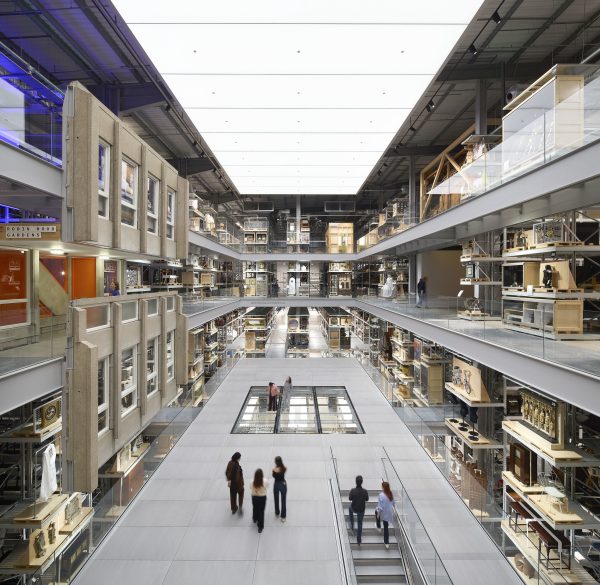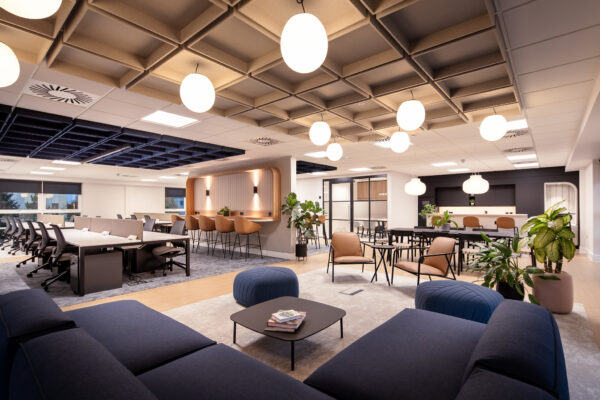
Lumen House
Lumen House demonstrates how human-centred thinking and technical intelligence can come together to create research spaces that are not only functional — but also inclusive, supportive and future-ready.
Lumen House reimagines what inclusive and adaptable research workplaces can be. Located at the Harwell Science and Innovation Campus in Oxfordshire, the project involved transforming an existing two-storey office building into a flexible science-led environment with a 60:40 laboratory-to-office split — designed to support research teams working across a range of disciplines.
Delivered in collaboration with ARC Group, the scheme sets a new benchmark for neuroinclusive laboratory and workspace design in the UK. The brief required the team to combine high-performance laboratory standards with an environment that feels welcoming, legible and calming for all users.
This is ARC’s first UK neuroinclusive laboratory, designed to enable a diverse workforce to work effectively and confidently — without compromising technical performance or operational resilience.

Value
From the outset, the project set out to challenge expectations of what a scientific workplace could be. The ambition was to design an environment that performed at a high technical level, while also feeling calm, intuitive and supportive for every user, particularly those who are neurodivergent. This approach framed every design decision – to create a place where science, wellbeing and inclusivity could coexist.
Working with the existing structure, we carefully retained and upgraded as much of the original fabric as possible. The previously tired entrance has been replaced with a new glazed lobby, establishing clarity, light and a welcoming first impression. This reorientation sets the tone: open, accessible and easy to navigate.
Internally, the layout has been structured to balance laboratory precision with softer, shared spaces. A clear and legible circulation route anchors both floors, while zoning creates distinct areas for focused research, quiet work, collaboration and social connection.
Every aspect of the interior was considered through the lens of sensory awareness and emotional comfort:
-
A neutral and calming colour palette provides visual ease and reduces cognitive load.
-
Soft, matt materials avoid glare and help create a sense of calm.
-
Varied working heights and seating options enable individual choice and empowerment.
-
Concealed storage and integrated joinery reduce clutter and maintain a grounded, peaceful environment.
-
Dedicated breakout and restorative spaces allow for reset moments away from task-focused environments.
The result is a workspace that supports autonomy, minimises stress triggers, and nurtures a sense of belonging — a contrast to the overstimulating labs often seen in science environments.

Impact
Lumen House has reshaped how people experience work on the campus. The environment feels calmer, clearer and more supportive — encouraging collaboration without pressure, and focus without isolation. Researchers and visitors describe the building as easy to understand, easy to move through and easy to feel comfortable in.
The project has also shifted conversations around workplace culture — demonstrating that scientific spaces can place human needs and wellbeing at the centre without compromising technical performance. It sets a new precedent for inclusive innovation environments and establishes ARC as a leader in creating places where people feel they belong.
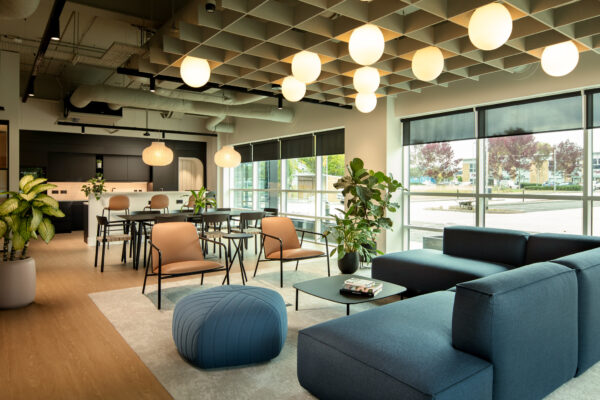
Sustainability
Sustainability was approached as common sense, not compromise. The building was reimagined, not replaced — saving carbon while extending the building’s life. Implementing passive design strategies proved challenging due to the constraints of working within an existing building fabric, which limited opportunities for natural ventilation, orientation adjustments, and envelope improvements. However, sustainability measures were still prioritised, with the roof successfully retrofitted to accommodate photovoltaic panels.
Working with partners such as Collecteco, large elements of the existing structure and interior — from partitions to flooring and ceiling tiles — were reused on-site or redistributed for reuse elsewhere.
-
Photovoltaic panels now support a lower carbon operational footprint.
-
DALI lighting controls allow users to tailor lighting to their comfort — reducing both stress and energy consumption.
-
Cycle facilities, showers and accessible travel routes encourage low-impact commuting.
This is a project where sustainability and inclusivity work hand in hand — each supporting long-term value.
“Collaborating with Fairhursts on the Lumen project has been a positive experience. The team successfully translated a complex technical brief into a distinctive, high-quality facility that met the Client’s expectations. Their disciplined approach and attention to detail ensured timely delivery without compromising on quality.”


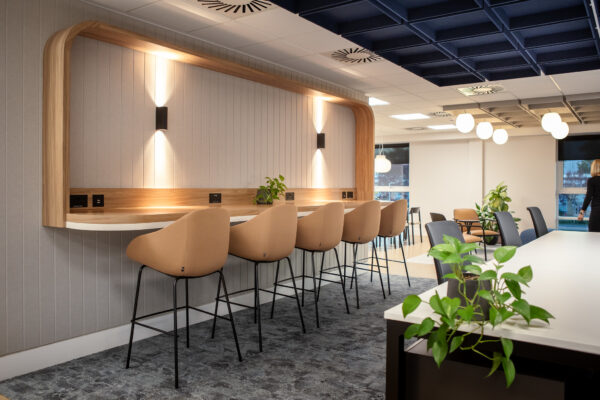

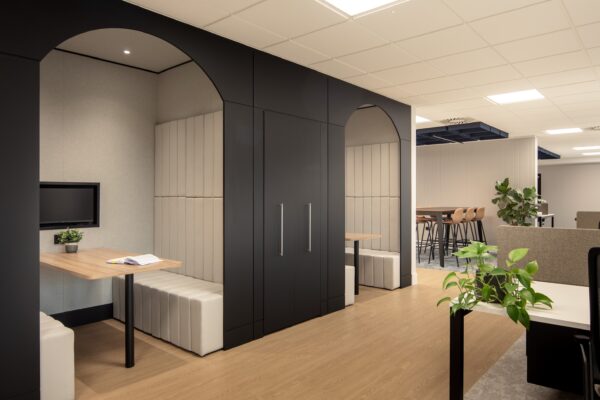
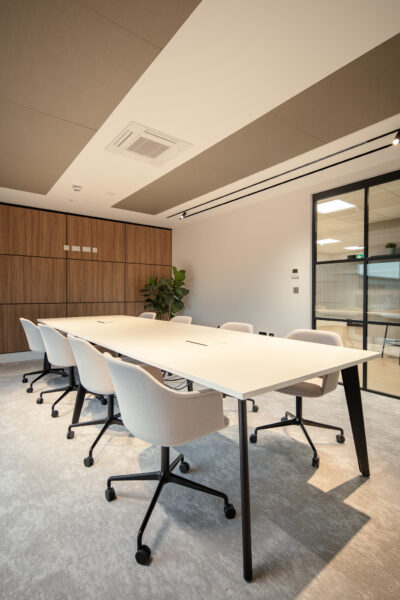
“Accessibility and inclusion must be at the heart of all workplace design, and Lumen shows what can be achieved when that principle guides a project from the start. By combining accessibility with neuroinclusive design, this space is not only more usable but more inspiring for the diverse community of scientists who will work here.”
Details
Information
Scope RIBA Stages: 1-6 Status Complete Completion Date September 2025 Location Harwell Science and Innovation Campus, Oxford Value £8mCollaborators & Partners
Principal Contractor Bulb Interiors Structural Engineer Ramboll Group MEP Engineer Ramboll Group Planning Consultant Carter Jonas Fire Engineer Ramboll Acoustic Consultant N/A Principle Designer Safer Sphere Project Manager Gardiner & Theobald LLP – Daniel Levett Neurodiversity Consultant Motionspot